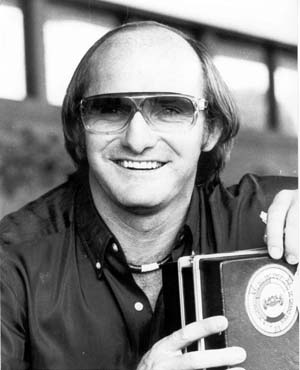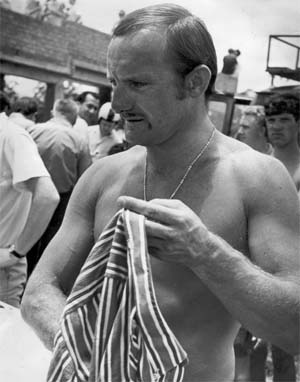evil. exquisite. exclusive. Those are the first words that will greet you when you when you visit the ECOSSE official website. And if you happen to visit their factory showroom, you will see the signboard of ECOSSE MOTO WORKS with an evil tattoo like logo. So what are you expecting?
 "The ECOSSE factory is not open to the public; however, the company does schedule personal appointments for customer viewings, color/option consultations and fittings. Please book your appointments with at least two week’s notice of your desired arrival date."
"The ECOSSE factory is not open to the public; however, the company does schedule personal appointments for customer viewings, color/option consultations and fittings. Please book your appointments with at least two week’s notice of your desired arrival date."This is a quote from the website 'Contact' link. And now, whats your impression?
Scared! Intimidated! Apprehension! .... I mean if this is how they greet people, how will their products be? Actually, it prepares you! Because what you are about to see will definitely intimidate you.
Denver, Colarado is the house of ECOSSE. ECOSSE Moto Works, Inc. is the premier luxury marque of distinctive, limited-production motorcycles established in 2001.The HERETIC X3 is their flagship model which will cost you close to $80,000. Its varities also come in Titanium named HERETIC X3 Ti, a close to 2000 cc, Kevlar and carbon-fiber exotic roadster. The style is no doubt avant-garde.
Basically what is their theme? Imagine the pleasure of a Cruiser with the performance of a Supersports! Mr. Alan Cathart puts it in a simple way. It is for bike enthusiasts who want a R1 crackler with the stability of a Yamaha Warrior, that is best of both the worlds, the best performance motorcycle meets one of the best V-Twin cruisers. Its a strret racer with the typical American Big V-Twins hooliganism.
ECOSSE intends to build several different models with the same underlying theme: "a synergistic combination of innovation, craftsmanship and technology with a nod to the company’s racing influence." ... in their words.
All the models share the same chassis styling and materials, but at the same time is different. All models are ofcourse handcrafted according to the wishes of the owner.
Mr. Donald Atchison, a former racer himself on a Bimota DB4, started building his dream in 2001 where his idea was to get inspired by his icons (Nortons, Velocettes) and fuse them to a prototype which will be equivalent to an Aston Martin.
“I call the HERETIC the anti-chopper,” he says. and continues “the heart of a hot rod in a Grand Prix-level chassis with the style of a ’60s Italian muscle car.”
Mr. Donald Atchison, a former racer himself on a Bimota DB4, started building his dream in 2001 where his idea was to get inspired by his icons (Nortons, Velocettes) and fuse them to a prototype which will be equivalent to an Aston Martin.
“I call the HERETIC the anti-chopper,” he says. and continues “the heart of a hot rod in a Grand Prix-level chassis with the style of a ’60s Italian muscle car.”
After 4 years and 3 prototypes (from X1 to X3), the HERETIC was finally built in 2005.
Mr Atchison is helped by his partners, Patrick Racing and Engenuity, from whom he sourced the powerplants, while Baker helped him with the proprietary designed 6-speed transmission. The handbuilt, 1753cc, 45-degree twin was blueprinted by engine icon Nigel Patrick exclusively for Ecosse Moto Works, the plant is machined from solid billet aluminum. The 107 cubic inches churn out 120 horsepower and 125 ft lbs of torque.
Mr Atchison is helped by his partners, Patrick Racing and Engenuity, from whom he sourced the powerplants, while Baker helped him with the proprietary designed 6-speed transmission. The handbuilt, 1753cc, 45-degree twin was blueprinted by engine icon Nigel Patrick exclusively for Ecosse Moto Works, the plant is machined from solid billet aluminum. The 107 cubic inches churn out 120 horsepower and 125 ft lbs of torque.
Its worthwhile to mention Öhlins contribution, the suspension masters, who developed fully adjustable front forks with Ecosse-specific internals and the rear shock with a unique triple-adjustable setting as per a cruiser, sportbike and dragster ranging from 27.5 inches to 30.5 inches. Mr. Acke Rising, President and founder of ISR, personally crafted the six-piston radial caliper braking system.
Other embellishments which are unique include a spiral machined into the ignition cover, the etched turn signal indicators, the carbon fiber woven leather gel seat and the bezel-like notches in the headlamp frame.
 An analog tachometer/LCD speedometer combination has an internal stopwatch. Answer Pro Taper aluminum handlebars are standard, and the bike comes with two sets of grips: a gel pair with a choice of leather and a pair of carbon fiber Momo grips.
An analog tachometer/LCD speedometer combination has an internal stopwatch. Answer Pro Taper aluminum handlebars are standard, and the bike comes with two sets of grips: a gel pair with a choice of leather and a pair of carbon fiber Momo grips.
 An analog tachometer/LCD speedometer combination has an internal stopwatch. Answer Pro Taper aluminum handlebars are standard, and the bike comes with two sets of grips: a gel pair with a choice of leather and a pair of carbon fiber Momo grips.
An analog tachometer/LCD speedometer combination has an internal stopwatch. Answer Pro Taper aluminum handlebars are standard, and the bike comes with two sets of grips: a gel pair with a choice of leather and a pair of carbon fiber Momo grips. For more information and lots of photos, visit their website by clicking on the logo
For test ride reviews, you can visit the below pages.
Motorcycling Mag (Article 1) (Article 2) / Motorcycle USA
Specifications -
ENGINE - 1330 - 1966 cc, air-cooled 42 - 45 degree V-twin, Ecosse billet aluminium, polished finish, 45mm Mikuni carburetor
DRIVE SYSTEM - 6 speed transmission Regina chain final drive
MAX POWER / TORQUE - 120 - 135 bhp / 14.2 - 26.2 kgm
FRONT/ REAR BRAKES - 6 piston calipers 320mm rotors / 2-piston 260mm
FRONT / REAR SUSPENSION - Öhlins; fully adjustable/ Öhlins shock for Ecosse; fully adjustable, including three different riding modes
WEIGHT (DRY) - 445 lbs (202 kg)
For test ride reviews, you can visit the below pages.
Motorcycling Mag (Article 1) (Article 2) / Motorcycle USA
Specifications -
ENGINE - 1330 - 1966 cc, air-cooled 42 - 45 degree V-twin, Ecosse billet aluminium, polished finish, 45mm Mikuni carburetor
DRIVE SYSTEM - 6 speed transmission Regina chain final drive
MAX POWER / TORQUE - 120 - 135 bhp / 14.2 - 26.2 kgm
FRONT/ REAR BRAKES - 6 piston calipers 320mm rotors / 2-piston 260mm
FRONT / REAR SUSPENSION - Öhlins; fully adjustable/ Öhlins shock for Ecosse; fully adjustable, including three different riding modes
WEIGHT (DRY) - 445 lbs (202 kg)
Undoubtedly, this bike is built to the highest standards, with performance-packed style. The attention to detail is unmatched. With a 61-inch wheelbase and weighing 200kgs only, this American hot rod is an impressive blend of carbon-fiber artistry and edgy attitude, which is very well etched as you must have gone through the intro.
To custom tailor the bike of your dreams, Ecosse Moto Works offers personalized service to guide their client through the unlimited choices of paint, finish and other options. Upgrades can include the Patrick Racing motor in either matte, machine finish or even the full-show polished version.
And Yes!, Only 100 sins will be constructed.
To custom tailor the bike of your dreams, Ecosse Moto Works offers personalized service to guide their client through the unlimited choices of paint, finish and other options. Upgrades can include the Patrick Racing motor in either matte, machine finish or even the full-show polished version.
And Yes!, Only 100 sins will be constructed.




















































